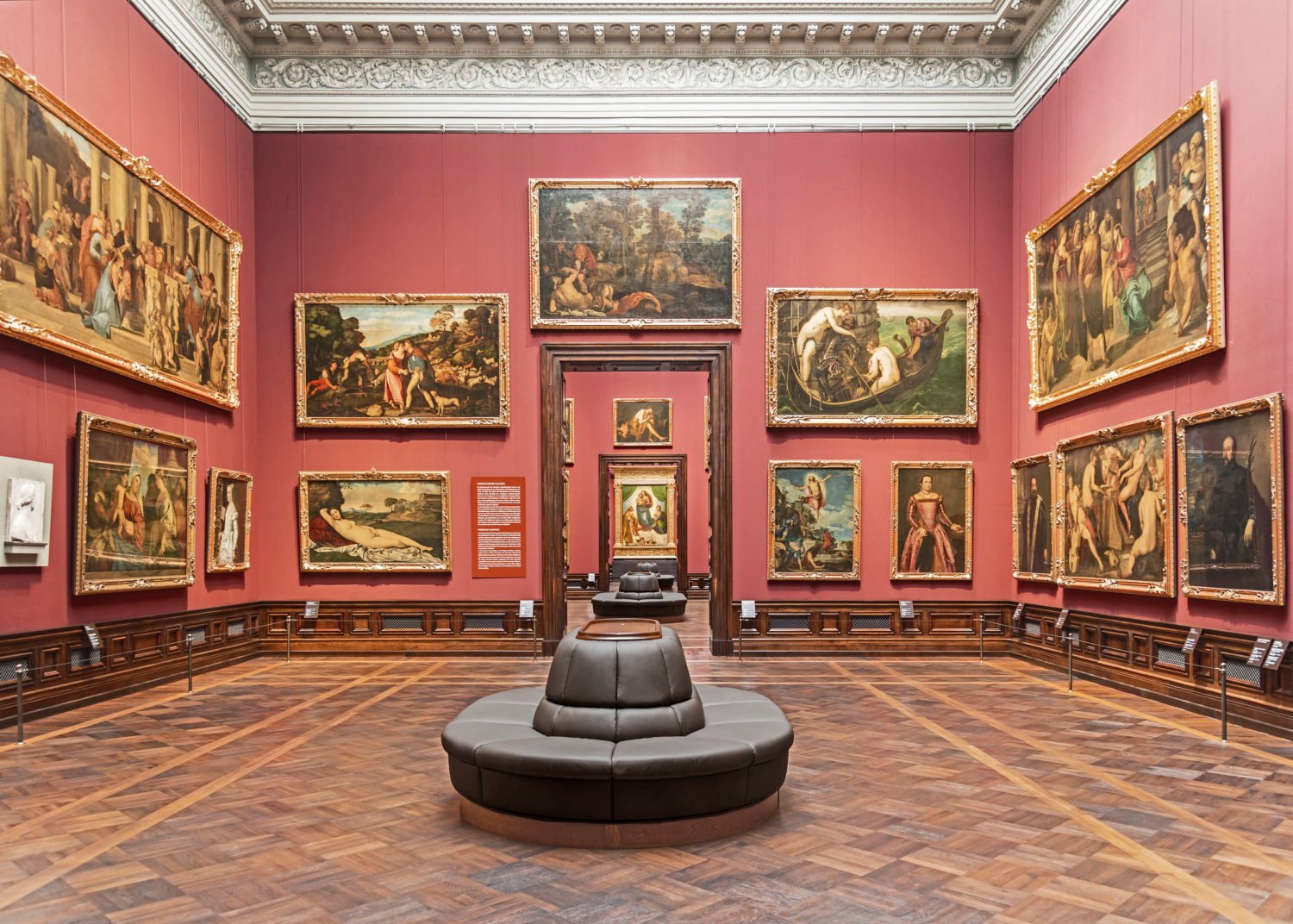
Since 1754, one of Raphael’s most enigmatic paintings, The Sistine Madonna, has resided at the Old Masters Picture Gallery in Dresden (besides a short stint during which the painting headed to Russia, following the German’s loss in World War II). This weekend, the Madonna and her two iconic little angels are on view within a new constellation of paintings and sculptures, following the institution’s seven-year-long renovation and rehang of its historic collection.
Already, the Old Masters Picture Gallery’s new look (which bore a price tag of over $50 million) has received extensive praise from the German press. The museum has rehung a display of 700 paintings, with 420 antique and post-antique sculptures now standing side-by-side these canvases for the first time. This means that masterpieces by Rembrandt, Raphael, and Titian are in direct conversation with the museum’s impressive sculpture collection, which ranges from classical times up to 1800.
The opulent museum building, called the Semper Gallery, is expecting masses of visitors over the weekend for its opening on Saturday, February 29. The opening festivities provide a moment of optimism for an art-filled city that made headlines last fall when its Green Vault was robbed of priceless jewels. The museum confirmed that during renovations security measures had been adapted in view of the burglary at the Green Vault.
“I am absolutely thrilled by how successfully the gallery has been carefully but firmly modernized,” Stephan Koja, director of the Old Masters Picture Galleries and its Sculpture Collection, said in an official statement to the press. He joined the museum midway through the extensive renovations, which have also updated climate controls and the institution’s architecture. “It is a particularly lovely challenge to refurnish and redesign such a historically significant museum,” he adds, stressing that the museum holds the oldest and largest collection of antiquities north of the Alps, charting “five millennia of European artistic and cultural history.”
Installation view of the Old Masters Picture Gallery and Sculpture Collection. Courtesy SKD.
A newly christened sculpture hall, which previously held armory and weapons, now means that light basks over the marble figures on clear days. Not far away are 64 works by Lucas Cranach the Elder, some 39 pieces from the workshop of Peter Paul Rubens, and 24 paintings by Anthony van Dyck. Bright walls add a colorful backdrop to paintings like Giorgione’s Slumbering Venus, Rembrandt’s Ganymede, and Titian’s Zinsgroschen.
Italian art is now hung on rich crimson walls; German and Dutch work gets a regal green treatment, while French and Spanish art is displayed against blue backgrounds. Many of the artworks and frames underwent extensive restoration during the revamp. Despite there being around 1,100 works now on view, this represents only a fraction of the muscular Dresden State Collections.
Another highlight is Vermeer’s Girl Reading a Letter at an Open Window. It’s here, bearing new surprises: Last year, during the restoration, a hidden angel was uncovered in the painting.
Gemäldegalerie Alte Meister und Skulpturensammlung bis 1800
New chronological groupings of art from different countries are aimed at conjuring an image of what it means to be human, according to several statements from the museum. Marion Ackermann, director-general of the Dresden State Collections, says the rehang “revives the original spirit of the Kunstkammer (Art Chamber): the idea of works of art and artifacts co-existing in a dialogue that transcends the boundaries of the genres.”
Beyond the permanent exhibitions, a hall is dedicated to temporary exhibitions as well. The Winckelmann Forum will welcome a Raphael show this April (2020 marks the 500th anniversary of the artist’s death). There’s also a planned show focused on Vermeer’s Girl Reading a Letter at an Open Window set for 2022, which will later travel to Japan.
Dresden itself is still working through the trauma of the city’s February 1945 bombing, which flattened 90 percent of its buildings and homes as the Allies closed in on Nazi Germany. The original Old Masters Picture Gallery was largely devastated, and most of the collection was removed by the Russian army to Moscow and Kiev. Some 450 works are still missing or lost. The sheer quantity of artworks in the revamped museum is sure to draw even more tourism to Dresden. Some 75 percent of visitors come from abroad; half of them are Russian.